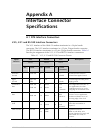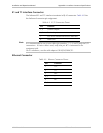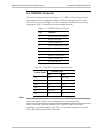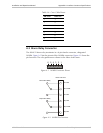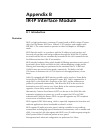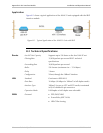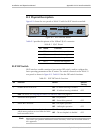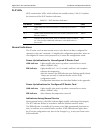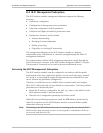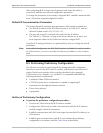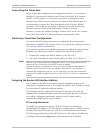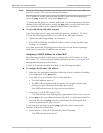
ASMi-52 Ver. 2.5 Introduction B-1
Appendix B
IR-IP Interface Module
B.1 Introduction
Overview
IR-IP is a high-performance, miniature IP router based on RAD's unique IP router
chip, the Chip Router. IR-IP has a 10BaseT (UTP) interface and complies with
IEEE 802.3. The router interface operates in either half-duplex or full-duplex
mode.
IR-IP filters the traffic, in accordance with the IP address of each packet, and
forwards only packets with foreign addresses through the WAN link. IP packets
received from the link are automatically forwarded to the LAN connected to the
local Ethernet interface if the IP net matches.
IR-IP includes hardware filters which handle all filtering operations at wire speed
from both LAN-to-WAN and WAN-to-LAN, without dropping a single packet.
Filtering and forwarding are performed at the maximum rate of 35,000 and
30,000 frames per second (wire speed), respectively. The buffer can hold
256 frames of maximum size of 1534 bytes and a throughput latency of one
frame.
ASMi-52 equipped with IR-IP interface module can be used as a Frame Relay
Access Device (FRAD) with an integral IP router. RFC 1490 is supported for a
single DLCI on the WAN link. Detection of the DLCI and the maintenance
protocol is performed automatically. This allows the IR-IP to be used as the
termination unit of IP services over Frame Relay at the customer premises,
opposite a Frame Relay switch in the backbone.
Alternatively, Point-to-Point Protocol (PPP) can be run on the WAN link with
automatic negotiation on power-up, as well as support for PAP and CHAP
authentication. With this feature, IR-IP can operate opposite any PPP compliant
access server or backbone router.
IR-IP supports HDLC-like framing, which is especially important for broadcast and
multicast applications where bandwidth overhead is critical.
IR-IP supports IP multicast at wire speed, making it suitable for any multicast
environment including high speed downstream environments, such as satellite and
xDSL. Users on the LAN who register with IR-IP for an IP multicast group using the
IGMP protocol filter IP multicast packets at wire speed.
Management and advanced configuration are performed via Telnet.





